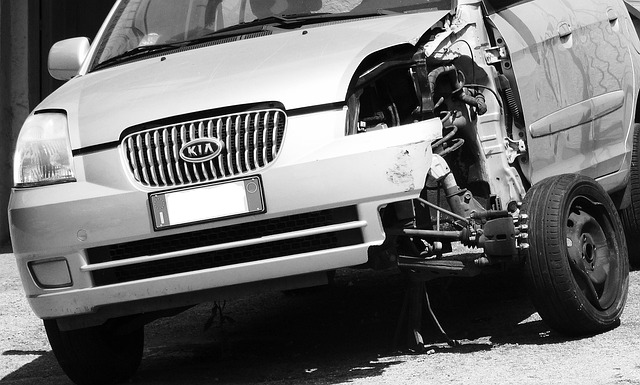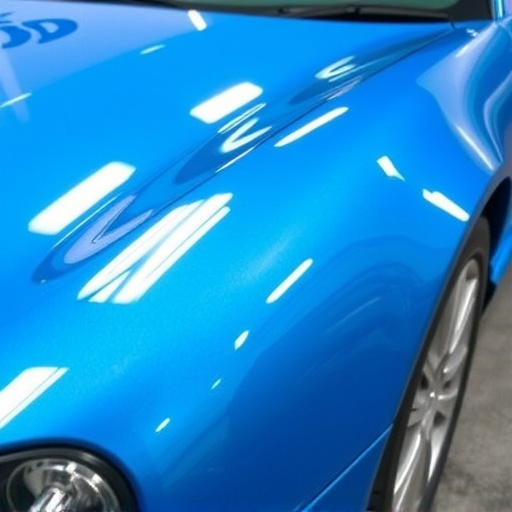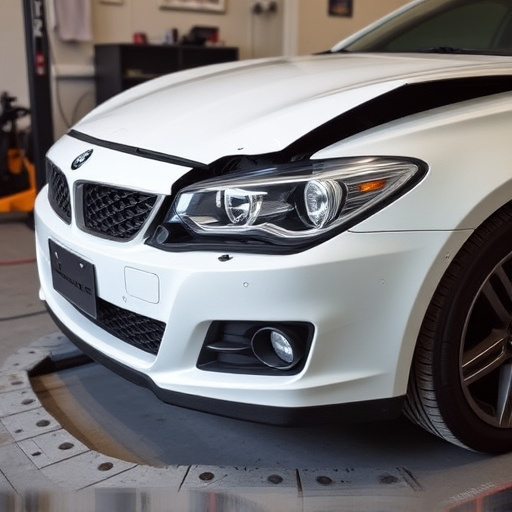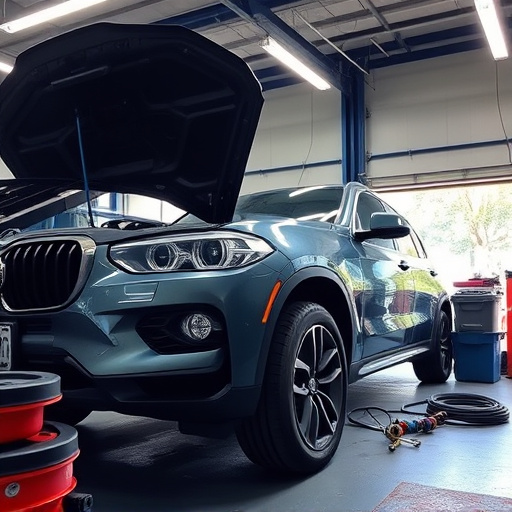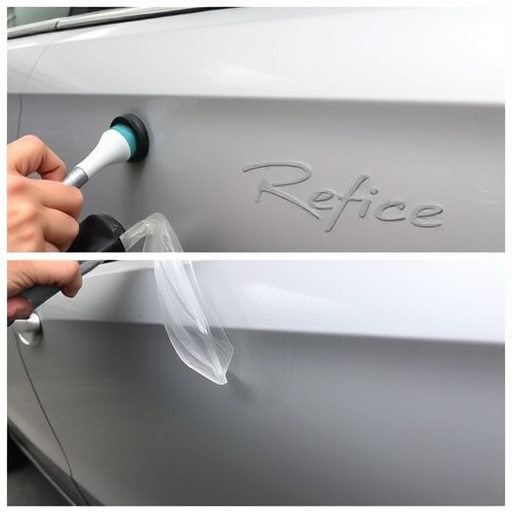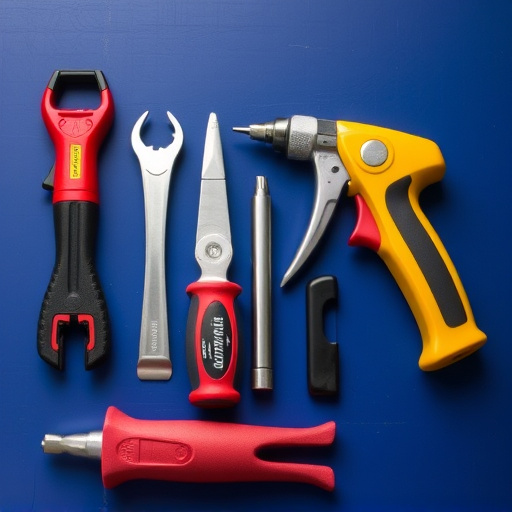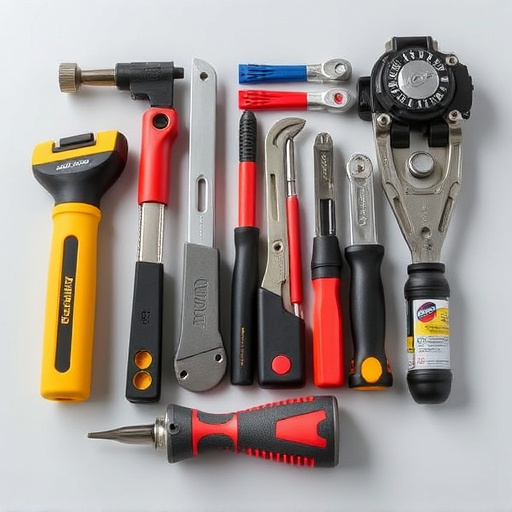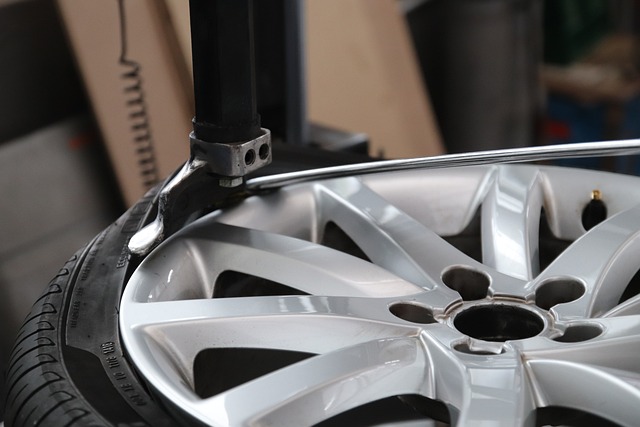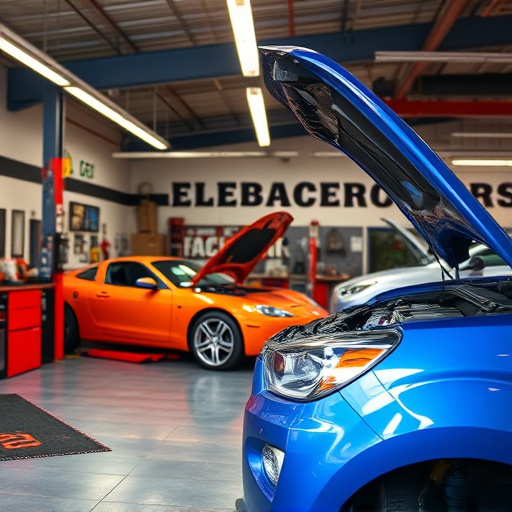Flexible bumper repair is a cost-effective, time-saving solution for minor vehicle damage, preserving original finishes and enhancing safety. Assess bumper condition: for small dents or cracks, flexible repair is ideal; for extensive damage, replacement is recommended to maintain structural integrity and vehicle value.
Is your car’s bumper damaged but not severely dented? Consider flexible bumper repair, a cost-effective solution that preserves your vehicle’s value. This method uses specialized techniques to straighten minor dents without replacing the entire bumper. By opting for repair, you save on labor costs and minimize downtime. Read on to understand the basics of flexible bumper repairs, explore its benefits, and learn when to choose replacement over repair.
- Understanding Flexible Bumper Repairs: The Basics
- Benefits: Cost Savings and Minimal Disruption
- When to Opt for Replacement vs. Repair
Understanding Flexible Bumper Repairs: The Basics

Flexible bumper repairs are an innovative approach to vehicle damage restoration, particularly for minor bumps and scrapes. This method involves using specialized tools and materials to reshape and realign the bumper, restoring its original form without needing to replace the entire component. It’s a cost-effective solution for car owners dealing with everyday nicks and scratches.
Unlike traditional automotive body work, flexible repairs minimize the need for extensive welding or painting. This not only saves time and money but also preserves the vehicle’s original finish. Fleet repair services often benefit from this method due to its efficiency in quickly restoring damaged vehicles back to their pre-incident condition, ensuring a safer and more aesthetically pleasing fleet of cars.
Benefits: Cost Savings and Minimal Disruption

One of the primary advantages of flexible bumper repair for minor damage is significant cost savings. Traditional bumper replacements can be expensive, often involving extensive auto body work and potentially new paint jobs. Flexible repairs, however, focus on fixing only the damaged area, minimizing material waste and labour costs. This makes it a budget-friendly option, especially for those with tight budgets or who don’t want to spend on unnecessary auto repair services.
Another benefit is minimal disruption to your daily routine. Unlike collision damage repair that might require lengthy shop time, flexible bumper repairs can often be completed quickly, with less need for extensive car paint repair. This means you won’t have to wait long periods or go without your vehicle while ensuring the safety and aesthetic integrity of your bumper remains intact.
When to Opt for Replacement vs. Repair

When deciding between flexible bumper repair and replacement for minor damage, several factors should guide your choice. One key consideration is the extent of the damage. If the bumper is slightly dented or has a small crack but remains structurally intact, a flexible bumper repair could be an excellent option. This type of repair can restore the bumper to its original shape and functionality without the need for a complete replacement. It’s cost-effective, environmentally friendly due to reduced waste, and often quicker than waiting for a new bumper to arrive.
However, if the damage is extensive, involving significant deformation, cracks that compromise structural integrity, or visible signs of rust, it might be more prudent to opt for a full bumper replacement. Automotive restoration experts can still perform vehicle collision repair using high-quality materials that match your car’s original equipment, ensuring both safety and aesthetics. While this may come at a higher cost upfront, it prevents future issues and maintains the overall value of your vehicle in the long run.
For minor bumps and scratches, flexible bumper repair offers a cost-effective and convenient solution. By opting for this method, you can save on labor costs and avoid the disruption of a full replacement. However, it’s crucial to assess the damage and consider both aesthetic preferences and long-term benefits before deciding. In some cases, a replacement might be necessary if the bumper is significantly damaged or if future repairs are anticipated. Weighing these factors will help you make an informed decision regarding the best course of action for your vehicle.
